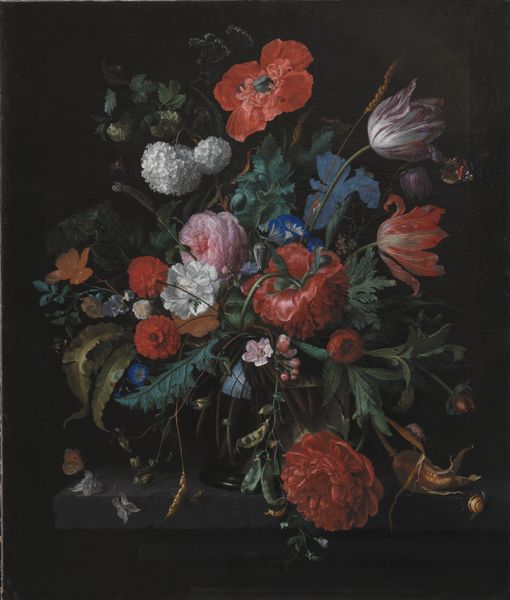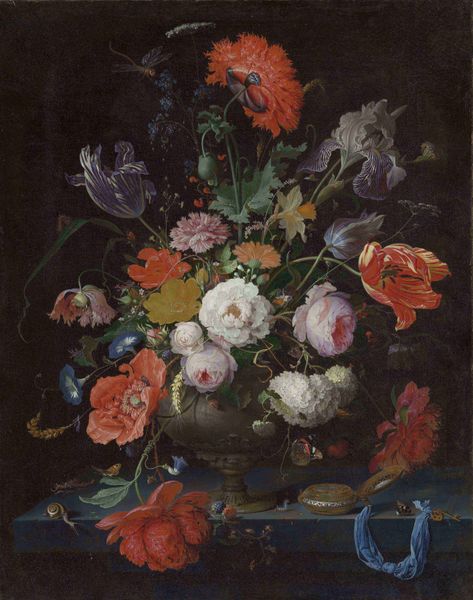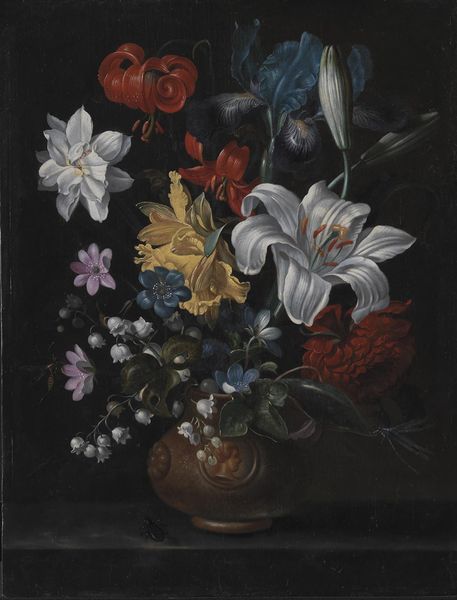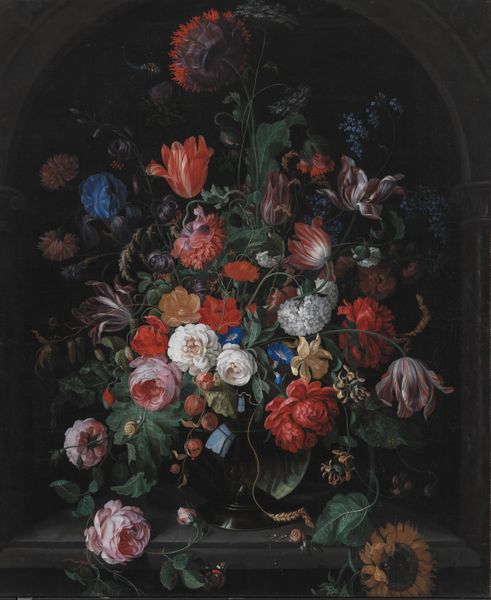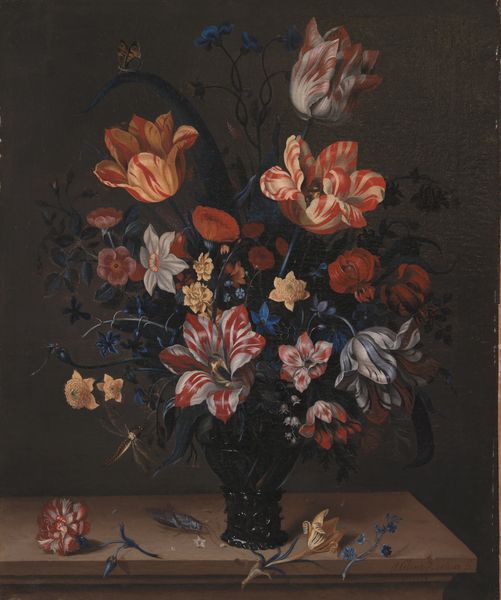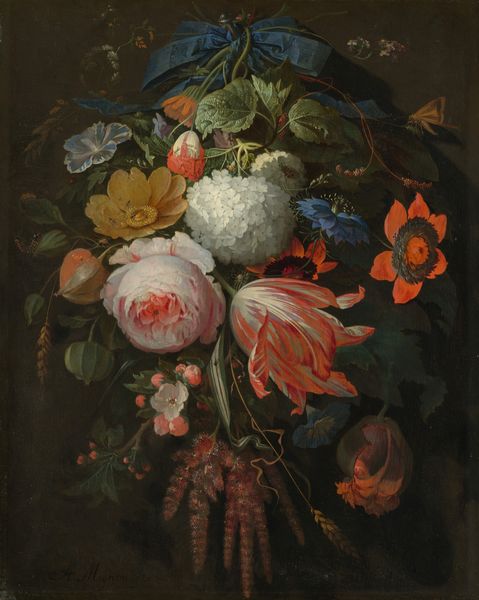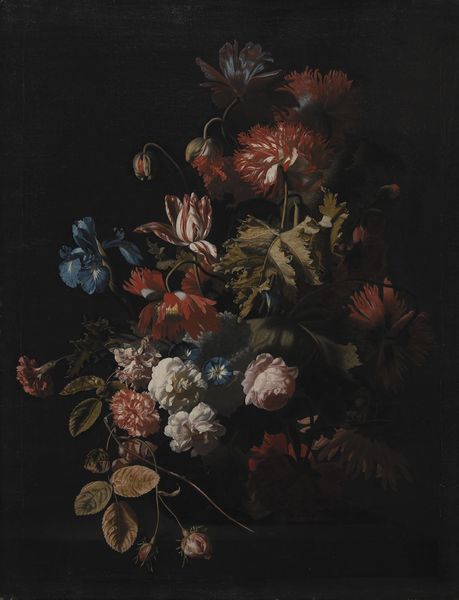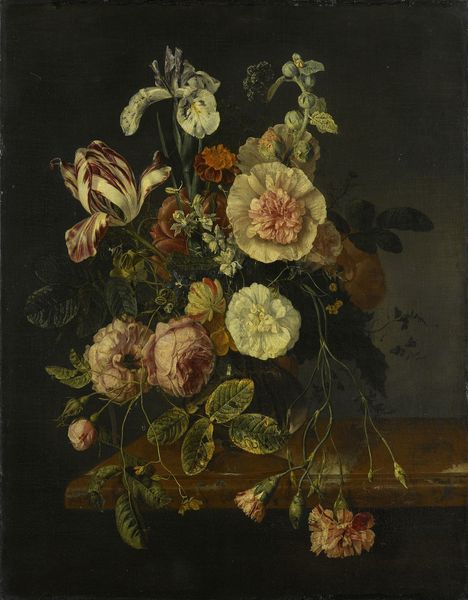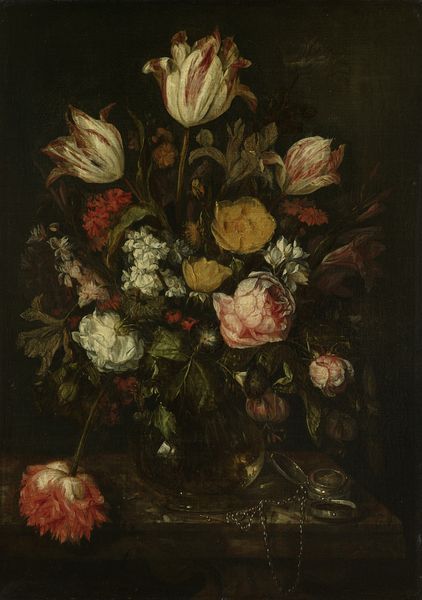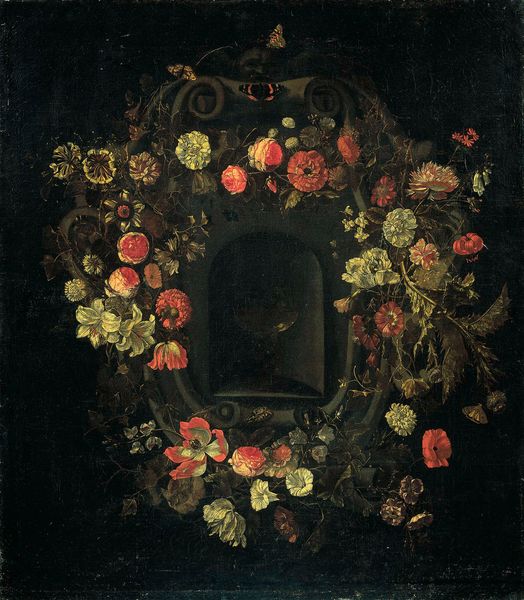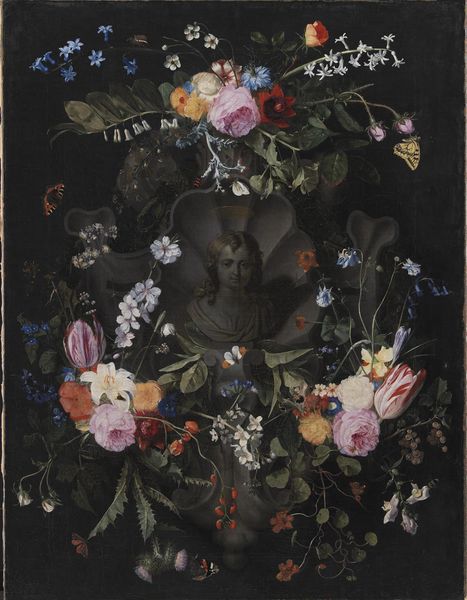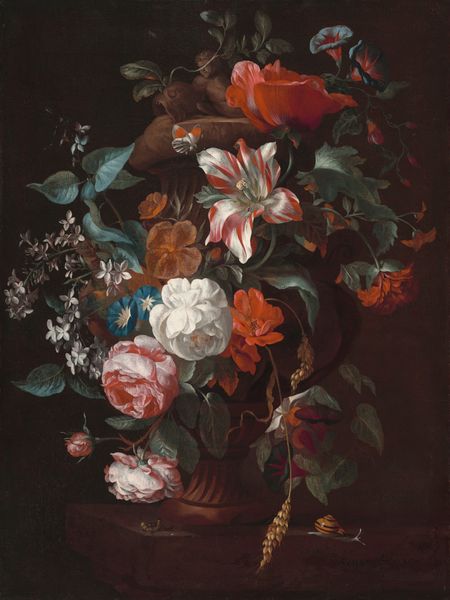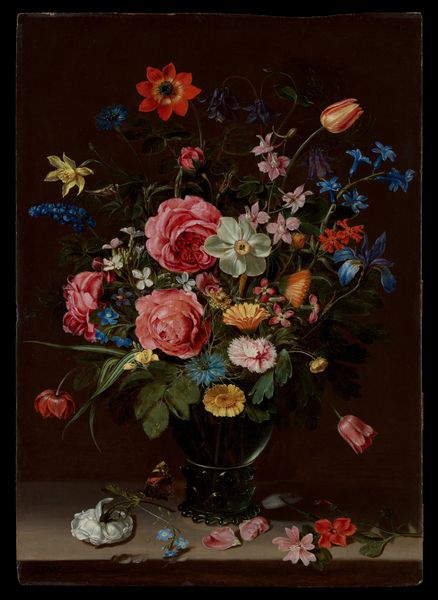
painting, oil-paint, ceramic, canvas
#
baroque
#
painting
#
oil-paint
#
ceramic
#
canvas
#
ceramic
#
earthenware
#
mixed media
#
watercolor
Dimensions: 101 cm (height) x 77.5 cm (width) (Netto), 119.8 cm (height) x 99.8 cm (width) x 8.2 cm (depth) (Brutto)
Curator: Here we have Maria van Oosterwijck’s "Bouquet of Flowers in a Glass Vase," created around 1685. It’s an oil painting on canvas, currently housed in the Statens Museum for Kunst. The darkness is quite striking, isn't it? Almost oppressive. Editor: Yes, the tenebrism creates a dramatic contrast. The bouquet seems to emerge from a void, grabbing the viewer's attention immediately. Curator: Absolutely. Note how Van Oosterwijck meticulously renders each petal, each leaf. It’s a marvel of technical skill, especially when you consider the intricacies of light and shadow in the Baroque style. We can really see the tangible form of the objects portrayed here, a real command of light and form. Editor: Indeed. But it's not just a demonstration of skill. During the Dutch Golden Age, flower paintings, particularly those executed by female artists, can be interpreted within a context of limited roles and societal expectations. Floral still lifes allowed for creativity, agency and an engagement with science. The selection of each flower is a possible symbolic representation, hinting at moral and political considerations for the viewer. Curator: An interesting thought. Do you see something particular about *these* flowers that implies symbolism? Editor: Given the presence of certain flowers alongside the decaying wheat and what looks like dead moths, it all gives off a Vanitas mood, reflecting on beauty’s fleeting nature. Oosterwijck also remained unmarried throughout her life, and while we can only speculate, it's important to recognize how patriarchal forces defined women in relation to their husbands during this time. How do we view Oosterwijck's achievements when considering social constructs? Curator: Fascinating. Still, I am mesmerized by her manipulation of texture, and in purely formal terms, there is the delicate balance created, as well as how the light creates gradations of shadow in a calculated composition, and her work here remains exquisite whether read in her era, or today. Editor: Indeed, it bridges both, doesn't it? From a technical mastery and display of observation, to opening questions of women's social mobility during a certain timeframe. Art reflects our own time period.
Comments
No comments
Be the first to comment and join the conversation on the ultimate creative platform.
